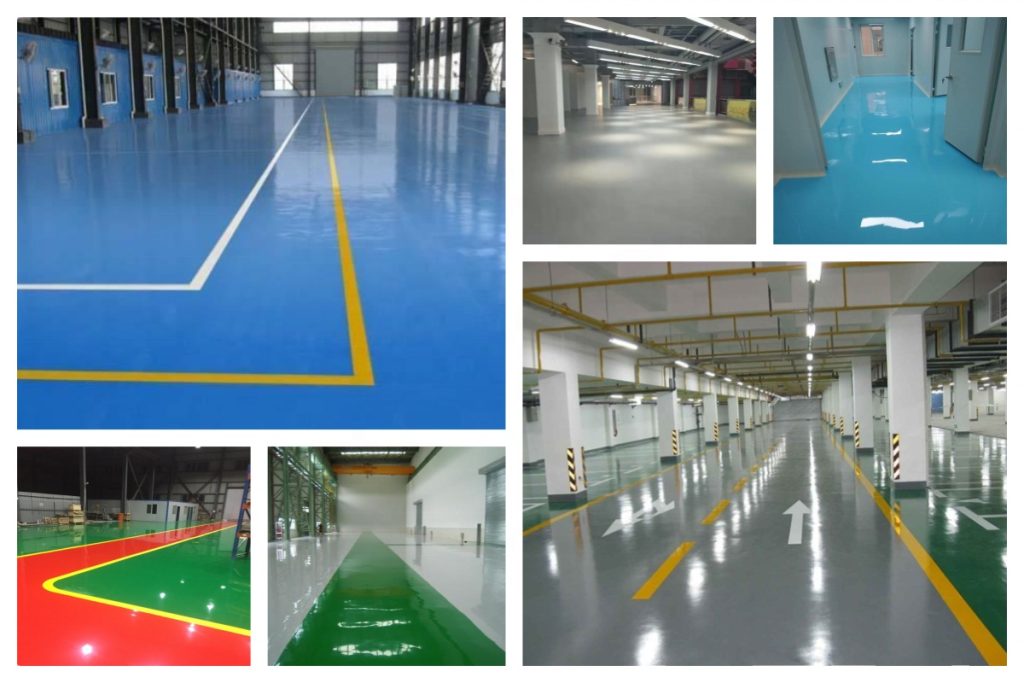Application Steps
1、Surface Preparation
Clean the Surface: Remove grease, dust, and loose debris thoroughly.
Grind the Floor: Use a grinder to ensure the floor is smooth and even, with no significant bumps or dents.
Repair Cracks: Fill cracks and imperfections with epoxy putty to create a solid base.
Check Moisture Content: Ensure the floor’s moisture content is below 8%; otherwise, apply a moisture barrier.
2、Primer Application
Mix the Primer: Thoroughly mix the self-leveling primer according to the manufacturer’s instructions.
Apply the Primer: Use a roller or brush to evenly coat the surface, enhancing adhesion for subsequent layers.
Curing Time: Allow the primer to dry for at least 8 hours (adjust based on temperature and humidity).
3、Intermediate Coating
Prepare Intermediate Layer: Mix the intermediate coating material with quartz sand for added strength and thickness.
Spread the Mixture: Use a trowel to evenly spread the mixture, filling any remaining surface irregularities.
Sand the Layer: Once cured, sand the surface lightly to remove imperfections and clean off dust.
4、Self-Leveling Topcoat Application
Mix the Paint: Combine the base material and hardener in the correct ratio and mix thoroughly.
Pour and Spread: Pour the mixture onto the floor and use a notched trowel to spread it evenly to the desired thickness (typically 1-3mm).
Deaeration: Roll a spiked roller over the wet surface to remove air bubbles and ensure a smooth finish.
Work Within Pot Life: Complete this step within the product’s working time to prevent premature curing.

5、Curing and Maintenance
Initial Curing: Allow the floor to cure for 12-24 hours before walking on it.
Complete Curing: Full curing typically takes around 7 days. Avoid heavy loads or chemical exposure during this period.
Key Considerations
(1)Environment: Ideal application conditions are temperatures between 10-30°C and humidity below 85%.
(2)Tools: Prepare essential tools such as mixers, trowels, spiked rollers, and grinders.
(3)Safety: Wear gloves and masks to protect against material contact and fumes.
(4)Accurate Mixing Ratios: Follow the manufacturer’s guidelines to ensure proper curing and performance.





